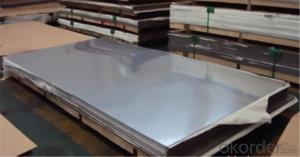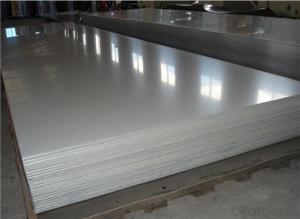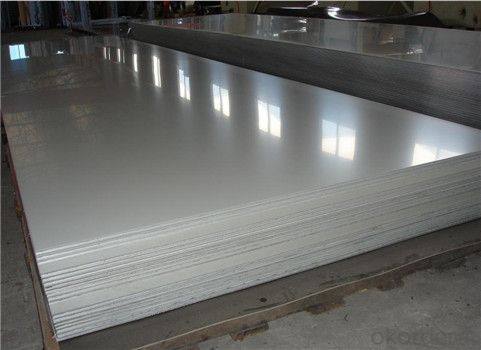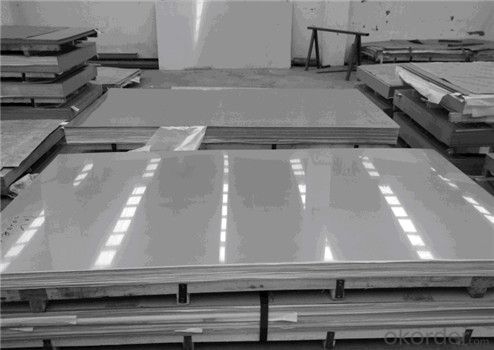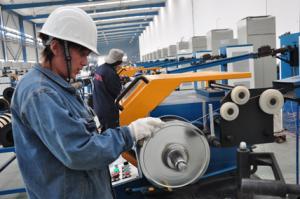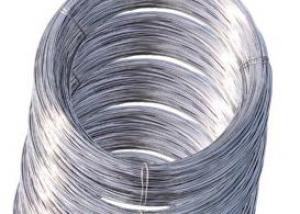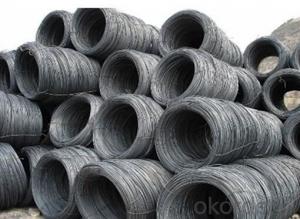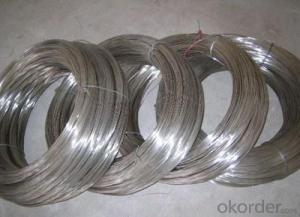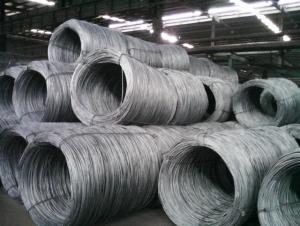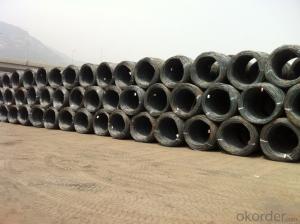Stainless Steel Plate 8K for Elevator Decoration,304 Acid Resistance Plate
- Loading Port:
- Tianjin
- Payment Terms:
- TT OR LC
- Min Order Qty:
- 100 m.t.
- Supply Capability:
- 45555555 m.t./month
OKorder Service Pledge
OKorder Financial Service
You Might Also Like
Specification
Description of stainless steel plate:
stanless steel sheet roll
Manufacturer since 2003;
Origin from Baosteel & Tisco;
100% Manufacture's direct deal.
Festures of stainless steel plate:
stainless steel sheet
1. Standard: AISI JIS, DIN etc.
2. TK:0.4-40mm
3. L:1-11.8m
4. Surface: 2B, BA etc.
Specifications of stainless steel plate:
Product Details | |
Product name | Stainless steel plate |
Brand name | RONSCO |
Standard | ASTM A240, ASTM A480, EN10088, JIS G4305 |
Material | 304, 316L, 321, 310S, 1.4301, 1.4307, 1.4404, S31803, S32750, 904L, Monel 400, Inconel 800 |
Surface | NO.1,2B,NO.4,BA,SB,Satin,Brushed,Hairline,Mirror |
Certificate | ISO9001, CE, SGS, TUV, DNV, BV, LR, GL, NK, RMRS |
Packing | In wooden cases,in wooden pallets |
Shipment | By sea, by air, by express |
Images of stainless steel plate:
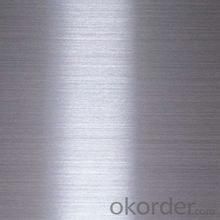
FAQ:
1. What is your package?
Packing situation: standard seaworthy packing or as customer required.
2. How long is the lead time?
Delivery time: 45 days after order confirmed.
3. What payment term do you accept?
Payment: T/T or L/C at sight.
- Q: What are the different types of steel wire rod wire drawing lubricants?
- There are various types of steel wire rod wire drawing lubricants, including dry lubricants, oil-based lubricants, and water-based lubricants. Dry lubricants are typically a mixture of graphite and other solid lubricants, which reduce friction during the wire drawing process. Oil-based lubricants are formulated with mineral or synthetic oils, providing excellent lubricity and reducing heat generation. Water-based lubricants are composed of water and additives like emulsifiers, rust inhibitors, and lubricating agents, offering good cooling and lubrication properties during wire drawing.
- Q: What are the common finishing methods for steel wire rod?
- The common finishing methods for steel wire rod include hot-dip galvanizing, electroplating, powder coating, and painting.
- Q: How are steel wire rods used in the production of piano wire?
- Steel wire rods are used in the production of piano wire by being drawn through a series of dies to gradually reduce their diameter. This process, known as wire drawing, results in a long, thin, and high-tensile strength wire that is then coiled, hardened, and tempered to create the strong and resilient piano wire used in piano strings.
- Q: Can steel wire rod be used in the production of reinforcing bars?
- Steel wire rod has the ability to be utilized in the manufacturing of reinforcing bars, commonly referred to as rebar. These rebar are crucial for fortifying and reinforcing concrete structures, such as buildings, bridges, and highways. Steel wire rod serves as a raw material during the manufacturing process of rebar. Typically, this wire rod is composed of top-notch steel and is drawn into the desired thickness and shape to meet the specific requirements of reinforcing bars. By doing so, it furnishes the necessary strength and durability needed to enhance the structural integrity of concrete, thus preventing any potential cracking or failure. Consequently, steel wire rod stands as an essential element in the production of reinforcing bars.
- Q: What are the different types of steel wire rod coatings used for increased strength?
- The different types of steel wire rod coatings used for increased strength include galvanized coatings, zinc-aluminum coatings, and epoxy coatings.
- Q: What are the different types of wire mesh for filtration made from steel wire rod?
- Wire mesh for filtration, which is made from steel wire rod, comes in various types. These include: 1. The most common and basic type is plain weave mesh. It is created by weaving the steel wire rod in a simple over-and-under pattern, resulting in a robust and sturdy mesh. Plain weave mesh is suitable for general filtration purposes. 2. Twilled weave mesh is characterized by a diagonal pattern formed by the weave. It has a higher mesh count compared to plain weave, enabling finer filtration. Twilled weave mesh is often employed in applications that require a higher level of filtration. 3. Dutch weave mesh is made by using two different wire diameters for the warp and weft wires. The warp wires are thicker, while the weft wires are thinner. This produces a tightly woven mesh with smaller openings in the weft direction, making it ideal for fine filtration applications. 4. Welded mesh is created by welding the intersecting points of the steel wire rod, resulting in a strong and durable mesh structure. It is commonly used in industrial filtration applications that require high strength and rigidity. 5. Expanded metal mesh is produced by stretching and expanding a sheet of steel wire rod, creating diamond-shaped openings. This type of mesh offers excellent strength and rigidity, making it suitable for heavy-duty filtration applications. Each type of wire mesh has unique filtration capabilities and is suitable for specific applications. The choice of wire mesh for filtration made from steel wire rod depends on factors such as the desired filtration level, strength requirements, and the specific environment in which it will be utilized.
- Q: What are the different wire drawing lubricants used for steel wire rod?
- There are several different wire drawing lubricants used for steel wire rod, including soap-based lubricants, oil-based lubricants, and synthetic lubricants. Soap-based lubricants are commonly used for mild steel wire rod, as they provide good lubrication and cooling properties. Oil-based lubricants are often used for high carbon and alloy steel wire rod, as they offer better lubrication and reduce friction during the drawing process. Synthetic lubricants, such as water-based polymer lubricants, are also used to improve surface finish and reduce wear on the wire rod during drawing.
- Q: How is the ductility of steel wire rod evaluated?
- To assess the ductility of steel wire rod, a common method is to perform a tensile test. This test involves applying a controlled pulling force to a sample of the steel wire rod until it reaches its breaking point. Throughout the test, the elongation or deformation of the sample is measured to gauge the ductility of the material. The ductility is then determined by calculating the percentage of elongation or reduction in cross-sectional area before the sample fractures. A higher percentage signifies greater ductility, whereas a lower percentage implies lower ductility. By utilizing this evaluation technique, manufacturers and engineers can effectively determine the appropriateness of steel wire rod for various applications, including construction, automotive, and manufacturing industries.
- Q: How is steel wire rod used in the manufacturing of wire forms for household appliances?
- Steel wire rod is used in the manufacturing of wire forms for household appliances as it provides strength and durability to the final product. The wire rod is first drawn and shaped into the desired form, such as hooks or grids, which are then incorporated into various components of household appliances. The wire forms not only enhance the structural integrity of the appliances but also serve functional purposes, such as holding or supporting other parts. Overall, steel wire rod is crucial in creating reliable and efficient wire forms for household appliances.
- Q: What are the different microscopy techniques used for steel wire rod analysis?
- Steel wire rod analysis can be performed using several microscopy techniques, which offer valuable insights into the microstructure, composition, and defects of the wire rod. 1. Utilizing optical microscopy, researchers can observe the wire rod's microstructure by employing visible light. This technique allows for the examination of grain size, grain boundaries, and visible defects like cracks or inclusions. 2. Scanning Electron Microscopy (SEM) involves directing a focused beam of electrons onto the wire rod's surface to capture high-resolution images. Through SEM, one can gather information about surface morphology, elemental composition, and the presence of surface defects or contaminants. 3. Transmission Electron Microscopy (TEM) is a powerful technique that involves passing a beam of electrons through a thin section of the wire rod to obtain detailed images of its internal microstructure. TEM provides information about crystal structure, grain boundaries, and the presence of atomic-level precipitates or defects. 4. Electron Backscatter Diffraction (EBSD) combines SEM with crystallography to determine the wire rod's orientation and grain structure. This technique offers insights into crystallographic texture, grain size distribution, and any deformation or recrystallization that might have occurred during processing. 5. X-ray Diffraction (XRD) involves directing X-rays onto the wire rod's surface to analyze its crystal structure. XRD provides information about phase composition, crystallographic orientation, and any residual stress or strain present. 6. Atomic Force Microscopy (AFM) employs a small probe to scan the wire rod's surface and capture high-resolution images. By utilizing AFM, researchers can gather information about surface topography, roughness, and the presence of surface defects such as scratches or pits. By employing these various microscopy techniques, researchers and engineers in the steel industry can develop a comprehensive understanding of microstructure, composition, and defects in steel wire rods. This understanding is essential for quality control, process optimization, and material development purposes.
Send your message to us
Stainless Steel Plate 8K for Elevator Decoration,304 Acid Resistance Plate
- Loading Port:
- Tianjin
- Payment Terms:
- TT OR LC
- Min Order Qty:
- 100 m.t.
- Supply Capability:
- 45555555 m.t./month
OKorder Service Pledge
OKorder Financial Service
Similar products
Hot products
Hot Searches
Related keywords
